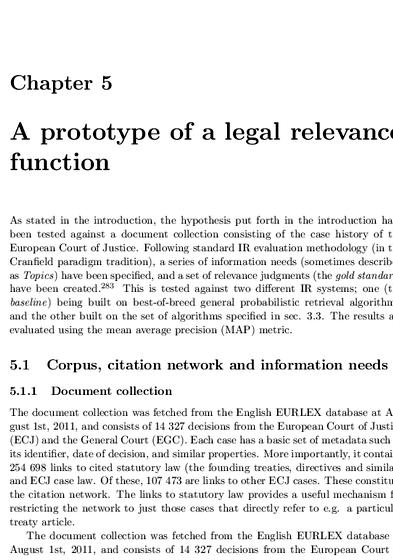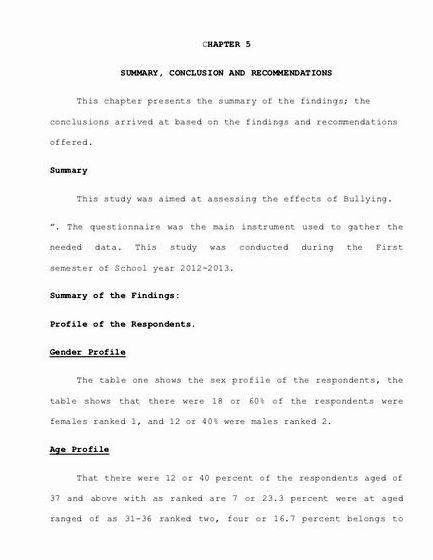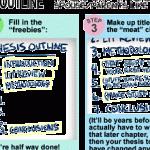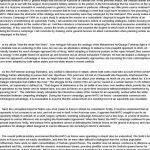A [perfect] PhD Thesis for London University / Computer Science UCL.
These notes of preparing the [perfect] PhD thesis structure and content stem from an ISRG lunch-time meeting at UCL CS. Chris Clack initiated the meeting, with contributions from the floor – staff OR students. Made available for information only, with no London University sanction.
A thesis is the acquisition and dissemination of new knowledge.
In order to demonstrate this the author must demonstrate that they understand what the relevant state of the art is and what the strengths and weaknesses of the SoA are. For someone’s work to be knowledge there must be a demonstration that suitable and systematic methods were used to evaluate the chosen hypothesis.
It is important that “new” is not just new to the researcher, but also new to the community – PhDs were sometimes in the past failed because a paper was published by another researcher a few weeks previously dealing with the same work. I don’t believe this is as common today, but novelty/originality/new understanding/marshalling existing ideas in ways that provide new insights is what it is all about.
Knowledge, understanding, and appreciation of the field This will show motivation, relevance to X, Y, X, who is doing what, c. Critical analysis of related work. Person X is doing Y, this is important because. this doesn’t address these points. Link the failings of related work to your own work. Importance (relevance) of own work. State contributions, is this an incremental improvement on the state of the art, an evolution on existing work, c. Beware of appearing to be too original, don’t appear to have missed or ignored existing work.
Not “a diary of work done”. In order to be awarded a PhD you must be able to present your work so that it is accessible to others and so that it demonstrates your mastery of a given subject. Although PhD theses may differ widely, you certainly won’t be awarded a PhD just for doing three year’s work and you won’t be awarded a PhD for “a diary of work done”.
A common attitude is “well, I’ve done my PhD, now all I’ve got to do is write it up”. Beware! The thesis IS the PhD – it doesn’t really matter how great your research has been during the three years – all that really matters is the thesis. Not “a collection of papers”. At UCL this is not an acceptable PhD thesis (some other universities allow this as a PhD route, e.g. for staff, but the required standard is very high). At UCL your thesis must have a THEME. It is similar to writing a book. You can however take a collection of papers and turn it into the core of a PhD. Not “a big 3rd year project”. Though some 3rdyr projects are excellent, most do not contain sufficient critical analysis or scientific method. Not “a lone journey”. It is important to have other people involved, if for nothing else then for proof-reading. You need to have an experienced supervisor who can tell you when to stop! (this is often the biggest problem faced by students). As the person doing the PhD, you are too involved and therefore you have the worst judgement on what is good or bad – you must get external advice.

Also remember that a thesis should be designed for the benefit of the reader, not the writer! So get lots of people to read your thesis and tell you what parts they could not understand.
Note: Should have an odd number of chapters, between 5 and 9. Abstract 1. Introduction Set the scene and problem statement. Introduce structure of thesis, state contributions (3-5). 2. Background Demonstrate wider appreciation (context). Provide motivation. The problem statement and the motivation state how you want the PhD to be judged – as engineering, scientific method, theory, philosophy, c. 3. Related Work Survey and critical assessment. Relation to own work.
4-6. Analysis, design, implementation and interpretation of results 7. Critical assessment of own work State hypothesis, and demonstrate precision, thoroughness, contribution, and comparison with closest rival.
8. Further Work 9. Summary Conclusions Restate contribution
A PhD made up on only critical assessment may be possible (for UCL) but is extremely difficult.
Average, good, size for a thesis is 150 pages all in. Perhaps up to 50 extra pages for a big appendix and bibliography. Beware of the trend to write long and boring doctorates (papers, c), improve your communications skills.
Another important datapoint: 2-3 conference, or 1-2 journal papers in respectable (ACM, IEEE, IOP like) places are good enough for chapters 4,5,6, and therefore the core of a PhD – testing by publication is a VERY good defense (or defence). Also note that the feedback from reviewers is extremely helpful, so all PhD students should be trying to publish their work (the feedback is even more useful when your submissions don’t get published!).
Always think – Presentation. Be precise in all things, esp: the statement of the problem, the solution, methods and frameworks. Thoroughness == scientific method. You must show proof that your contributions are valid.
Chapter headings – use 7 or 9! An odd number of (total) chapters gives a balanced appearance to the work (CC has a reference to back this up).
8/1/1997, JF. Keywords: PhD, outline, structure
(These will be summarised as soon as I have time)
Chris Clack
Jon Crowcroft
(Adapted from The Guaranteed Mackworth Thesis Formula, by Alan Mackworth, revised by Tim Brecht, thanks to Ondrej Lhotak for an addition to the Background and Related Work section)
Abstract (= 1 page)
- one page stating what the thesis is about
- highlight the contributions of the thesis
Chapter 1: Introduction (
- Thesis Statement (one or two sentences)
- What is your thesis about and what have you done?
- If you have a hypothesis what is it?
- How will you test (prove/disprove) your hypothesis?
- Motivation
- Why is this problem you’ve worked on important
- Goals / Objectives
- What are you trying to do and why?
- How will you or the reader know if or when you’ve met your objectives?
- **** Contributions *****
- What is new, different, better, significant?
- Why is the world a better place because of what you’ve done?
- What have you contributed to the field of research?
- What is now known/possible/better because of your thesis?
- Outline of the thesis (optional)
Chapter 2: Background / Related Work (
- More than a literature review
- Organize related work – impose structure
- Be clear as to how previous work being described relates to your own.
- The reader should not be left wondering why you’ve described something!!
- Critique the existing work – Where is it strong where is it weak? What are the unreasonable/undesirable assumptions?
- Identify opportunities for more research (i.e. your thesis) Are there unaddressed, or more important related topics?
- After reading this chapter, one should understand the motivation for and importance of your thesis
- You should clearly and precisely define all of the key concepts dealt with in the rest of the thesis, and teach the reader what s/he needs to know to understand the rest of the thesis.
Chapter 3: Theory / Solution / Program / Problem (
- continuing from Chapter 2 explain the issues
- outline your solution / extension / refutation
Chapter 4: Implementation / Formalism (
- not every thesis has or needs an implementation
Chapter 5: Results and Evaluation (
- adequacy, efficiency, productiveness, effectiveness (choose your criteria, state them clearly and justify them)
- be careful that you are using a fair measure, and that you are actually measuring what you claim to be measuring
- if comparing with previous techniques those techniques must be described in Chapter 2
- be honest in evaluation
- admit weaknesses
Chapter 6: Conclusions and Future Work (
- State what you’ve done and what you’ve found
- Summarize contributions (achievements and impact)
- Outline open issues/directions for future work
Bibliography / References
- Include references to:
- credit others for their work
- help to distinguish your work from others
- provide pointers to further detailed readings
- support your claims (if evidence can be found in others work)
- Ensure that ALL bibliographic entries are complete including: authors, title, journal or conference, volume and number of journals, date of publication and page numbers. Be careful to at least be consistent in punctuation.
- Learn how to use a good typesetting program that can track and format bibliographic references (e.g. groff, latex, frame).
- Within the text of the thesis, a reference with a number of people can be referred to as Lastname et al. (where et al appears in italics and the al is followed by a period).
- My personal view is that URL’s are not valid bibliographic references. They and their contents change and they often contain material that has not been refereed.
Appendix
- Include technical material that would disrupt the flow of the thesis.
- Included for curious or disbelieving readers
Writing Hints
- Before handing in a copy of what you’ve written you should proof read it and make corrections yourself. Be critical of your own work when you do this. You should think not only about syntax and grammar but about the structure of the document and whether or not your are making good arguments and whether or not someone else will be able to follow and believe what you are saying. You should repeat this process a large number of times before you hand in a copy. Far too many people type something in, print it out and hand it in. If this is the case you as a student are not doing your job. It is not your supervisor’s job to write your thesis.
- Try to aim for around 100 pages or less.
- Including a glossary or list of acronyms may be helpful.
- Start thinking about what your contributions are early on.
- How is what you are doing interesting and important?
- How will it make the world a better place?
- What are you doing or discovering that hasn’t already been done or isn’t already known?
- For many people it is best to start by writing the guts of the thesis, Chapters 3, 4 and 5. In some cases the results and conclusions may not be known (or may change) while doing these chapters.
- Chapters 3,4 and 5 can take on different forms depending on the thesis and approaches being used.
- Sometimes design, implementation and performance are subsections within chapters and the chapters are broken down by other criteria.
- Remember (especially those doing experiments) that you must include enough detail in your thesis so that someone else could read your thesis and reproduce your results – without ever talking to you.
- The word performance is by itself quite meaningless. Stating that you’ve improved performance significantly does not tell the reader anything. There are problems with the word performance and the word improved. Remember that there are often a number of different performance metrics that can be applied to a system. Instead of using the word performance state precisely what performance metric is improved. Also improved may also be potentially ambiguous. State precisely what you mean. For example: The mean response time has been decreased by 20%. Peak bandwidth has been increased by 40%.
- Try to get an outline and style guidelines from someone else for the system you use for formatting your thesis.
- All figures included should add to the work. As such, there should be text included that refers to the figures (preferably before the figure is encountered). The text should explain what the reader should get from the figure – what are they supposed to notice and what is the figure explaining. Often people just include a figure with no reference to the figure and no explanation of what the figure is for – if the figure was not included no one would notice (this is not a good approach). Note that when referring to a figure or a section by name they should be capitalized as in — Figure 3 shows the architecture of our system or in Section 4 we describe the experimental methodology.
- Newest pet peeve. You do not write 3.3GHz or 16GB you write 3.3 GHz or 16 GB. This is equivalent to saying you are 6feet tall (instead of 6 feet tall).
- Using and misusing abbreviations.
- The word it’s is an abbreviation of it is it is NOT a possessive form of it.
- The abbreviation of the phrase for example is written e.g.. It contains a period after the e and one after the g. A comma is also usually required with its use. This is an sentence that uses for example (e.g. this is how to use for example). Quite often it is enclosed in parentheses and you should avoid using it too often.
- The abbreviation of the phrase that is is written i.e.. It contains a period after the i and one after the e. A comma is also usually required with is use. This is a sentence containing an example of how to use that is (i.e. this sentence is the example). Quite often it is enclosed in parentheses and you should avoid using it too often.
- Don’t use the abbreviation etc.. The use of etc. is usually an admission of ignorance. It is like admitting that the list you’ve given is not complete but you don’t know what is missing. If you did know what was missing the list would be complete.
- You should purchase and use a book like The Elements of Style by Stunk and White.
Plagiarism
- You must not make minor modifications to someone else’s work and include it in your own work.
- If you want to explain someone else’s work the best approach is to read it over, put it aside, and then write in your own words what that work is about (do this without referring to the original source).
Useful Links
- Latex thesis templates for UW
See the Section “UW E-Thesis Template”. - The Elements of Style
- Writing for Computer Science: The Art of Effective Communication, Justin Zobel, Springer, 1998
To Tim Brecht’s Home Page





 Supply chain management pdf thesis writing
Supply chain management pdf thesis writing Lizhong zheng phd thesis writing
Lizhong zheng phd thesis writing Thesis writing in progress phd comics safety
Thesis writing in progress phd comics safety Phd thesis writing services in coimbatore
Phd thesis writing services in coimbatore Saboteur ha jin thesis proposal
Saboteur ha jin thesis proposal






